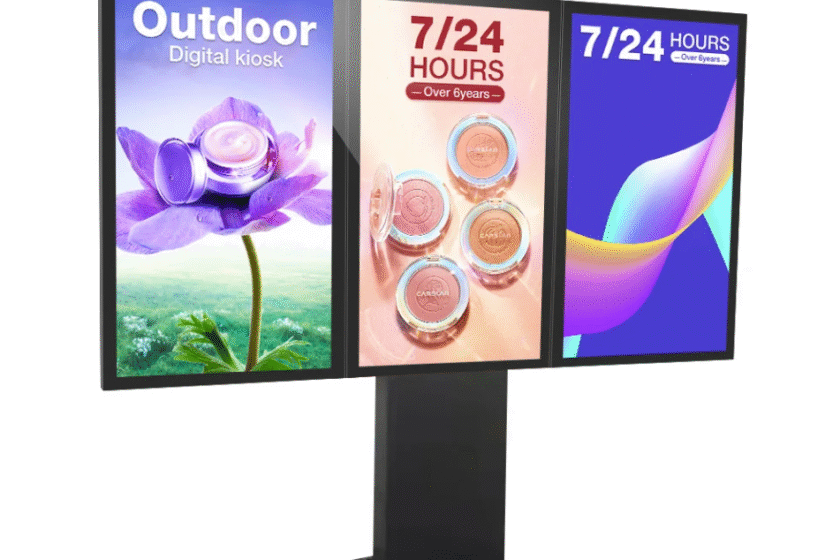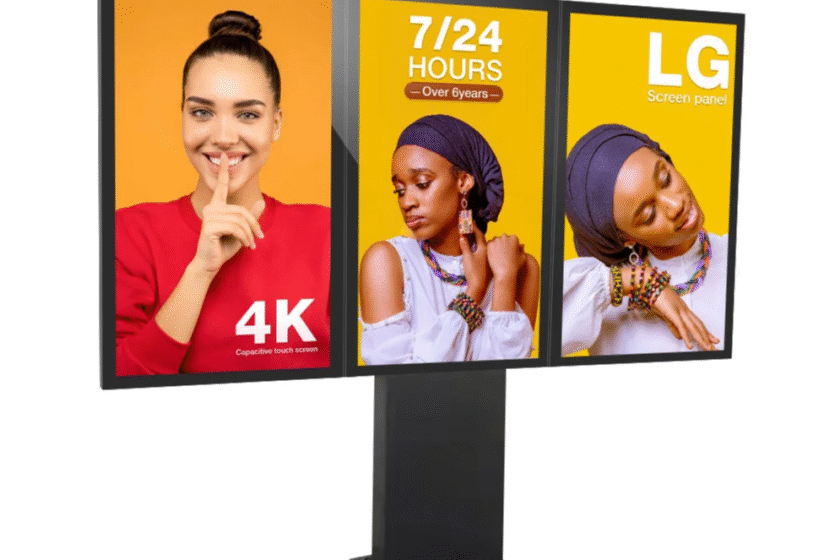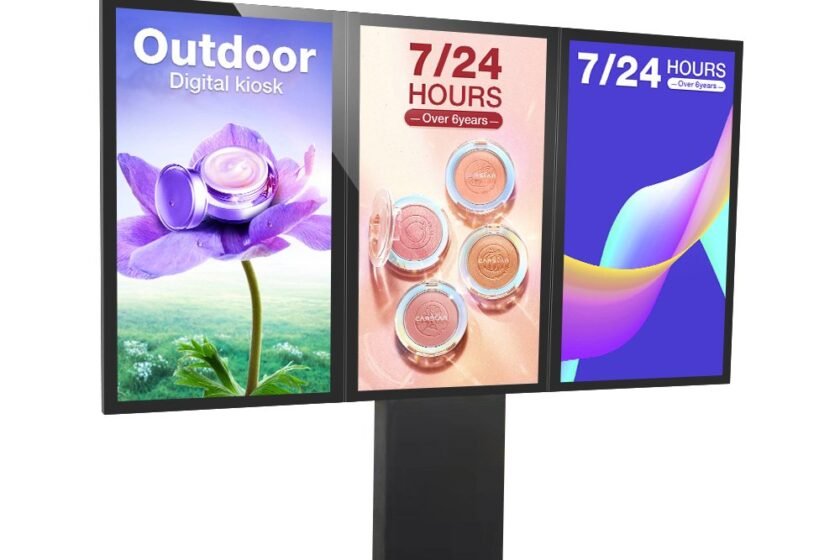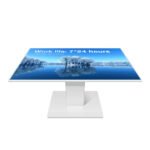Are Outdoor Digital Signage Displays Worth the Investment?
Outdoor digital signage displays represent one of the most dynamic and effective communication tools available to businesses today, transforming public spaces and enhancing audience engagement in the Digital Out-of-Home (DOOH) landscape. For decision-makers and product users in the retail, quick-service restaurant (QSR), transportation, and entertainment sectors, the consideration of deploying these specialized systems inevitably leads to a fundamental question: Is the significant initial investment truly justified by the long-term value and return? The answer, unequivocally, lies in a thorough understanding of their unique capabilities, robust construction, and pivotal role in modern customer experience. This comprehensive guide delves into the core aspects of these powerful display solutions, highlighting the critical factors that make them an indispensable asset for future-proof marketing and operational efficiency.
The Imperative Role of Outdoor Digital Signage Displays in Modern Communication
The shift from static billboards and posters to vibrant, dynamic outdoor digital signage displays is not merely a technological upgrade; it is a strategic repositioning of how businesses interact with the public. These displays leverage high brightness, captivating motion graphics, and real-time content updates to cut through the visual clutter of busy streets and commercial areas. They are designed to operate flawlessly 24/7 in conditions that would quickly destroy conventional indoor screens, thus ensuring maximum uptime and content visibility. Critically, these systems offer unparalleled flexibility. For example, a QSR chain can instantly change menu pricing based on time of day or stock availability, a capability that dramatically improves operational agility and reduces the time and cost associated with printing physical materials. Furthermore, the capacity for scheduled, context-aware messaging—such as displaying promotional content specifically relevant to current weather or local events—drives a higher level of audience relevance and, consequently, conversion.

Engineering Excellence: Key Features That Define Outdoor Performance
To withstand the rigors of the external environment, a truly effective outdoor digital signage display is engineered with a set of mandatory features that distinguish it from its indoor counterpart. Understanding these technical specifications is vital for any user evaluating a potential purchase.
Brilliance and Clarity: Conquering Sunlight Visibility
A primary challenge for outdoor deployment is overcoming “sunlight wash-out.” Standard displays appear dim and illegible under direct sunlight. Professional outdoor digital signage displays, conversely, must achieve extremely high brightness levels, often ranging from 2,500 to over 5,000 nits. This intense luminosity ensures that the displayed content remains crisp, vibrant, and perfectly readable even at the brightest time of day. Moreover, the use of specialized anti-glare glass and polarized filters is integrated into the design, significantly reducing reflections and maintaining optical clarity for passersby from various viewing angles.
Environmental Resilience: Protection Against the Elements
The structural integrity of the enclosure is arguably the most crucial feature. Outdoor digital signage displays are rated according to the Ingress Protection (IP) code, typically IP55 or IP66, signifying complete protection against dust ingress and resistance to high-pressure water jets or heavy rainfall. Beyond basic weatherproofing, these units incorporate sophisticated thermal management systems. On hot summer days, internal components are actively cooled via advanced ventilation or air conditioning units to prevent overheating. Conversely, in cold climates, internal heaters activate to ensure the display can start up and operate efficiently, preventing condensation and component damage. This meticulous engineering ensures consistent, reliable performance regardless of extreme temperature fluctuations or harsh weather events.
Security and Longevity: The Importance of Vandal Resistance
Given their public location, physical security is non-negotiable. The screen surface is often protected by tempered or laminated safety glass, offering substantial resistance against impact and vandalism. Furthermore, the sturdy, often powder-coated metal casing is designed to be highly resistant to corrosion and tampering. This holistic approach to durability translates directly into a lower total cost of ownership (TCO) by minimizing the need for frequent maintenance and replacement.

Strategic Applications: Where DOOH Displays Deliver Maximum ROI
The true value proposition of outdoor digital signage displays is demonstrated through their transformative impact across various industry verticals.
Revitalizing Retail and QSR Experiences
In the retail sector, especially for QSRs, the displays serve as dynamic “digital menu boards” in drive-thrus. This application significantly speeds up transaction times, reduces order errors, and facilitates immediate upselling through attractive, high-definition promotional content. By utilizing sophisticated content management software (CMS), a business can instantly deploy a uniform brand message across hundreds of locations, simultaneously launching a time-sensitive promotion or a global product announcement. This level of synchronization and responsiveness is practically impossible with legacy static signage.
Enhancing Transportation and Public Information
Transportation hubs, including airports, train stations, and bus stops, rely heavily on these displays for critical wayfinding and real-time information dissemination. Passengers expect instantaneous updates on schedules, gate changes, and delays. The clear, high-brightness nature of these outdoor digital signage displays ensures that crucial safety messages and navigation prompts are immediately visible and understood, improving passenger flow and reducing stress in high-traffic environments.
Monetization and Advertising Networks
For property owners and media companies, the deployment of large-format outdoor screens opens a significant opportunity for revenue generation through advertising. These displays become nodes in a Digital Out-of-Home (DOOH) network, allowing advertisers to purchase ad space for specific times of day, targeting demographics based on commuter patterns or events. The measurable impressions and sophisticated scheduling capabilities inherent in the technology make DOOH an increasingly attractive medium compared to traditional, less measurable physical billboards. Consequently, the initial investment is often quickly offset by generated advertising revenue, establishing a clear path to return on investment (ROI).
Future-Proofing Your Strategy: Integration and Next Steps
Choosing the right outdoor digital signage displays is not simply about selecting a screen; it’s about investing in a powerful communication ecosystem. Prospective users must consider the display’s integration capabilities, ensuring compatibility with their existing content management systems (CMS) and networking infrastructure. The future of DOOH will further emphasize interactivity, leveraging features like touch screens, camera-based analytics for audience measurement, and integration with mobile devices via QR codes or Near Field Communication (NFC).
In conclusion, for any business focused on maximizing visibility, streamlining operations, and delivering compelling, timely public messaging, outdoor digital signage displays are far more than a luxury; they are a critical infrastructure investment. Their superior durability, clarity in all lighting conditions, and unmatched ability to deliver dynamic, targeted content cement their position as the gold standard in effective external communication.

Frequently Asked Questions (FAQ)
Q1: How does the “nit” rating affect an outdoor display?
A: The nit (candela per square meter) rating measures brightness. For clear readability under direct sun, an outdoor digital signage display typically requires a minimum of 2,500 nits, with many professional models reaching 5,000 nits or more to combat sunlight effectively.
Q2: What is the typical lifespan of an outdoor digital signage display compared to an indoor model?
A: Due to their heavy-duty construction, specialized cooling/heating systems, and commercial-grade components, professional outdoor digital signage displays are engineered for extreme longevity, often offering an operating life of 50,000 to 100,000 hours, equivalent to over five to eleven years of continuous 24/7 operation.
Q3: Is professional installation mandatory for these displays?
A: Yes. Due to the unit’s weight, the complexity of securing it to meet wind/seismic regulations, and the necessity of proper IP-rated electrical wiring, professional installation is strongly recommended to ensure safety, regulatory compliance, and maximum operational lifespan.




